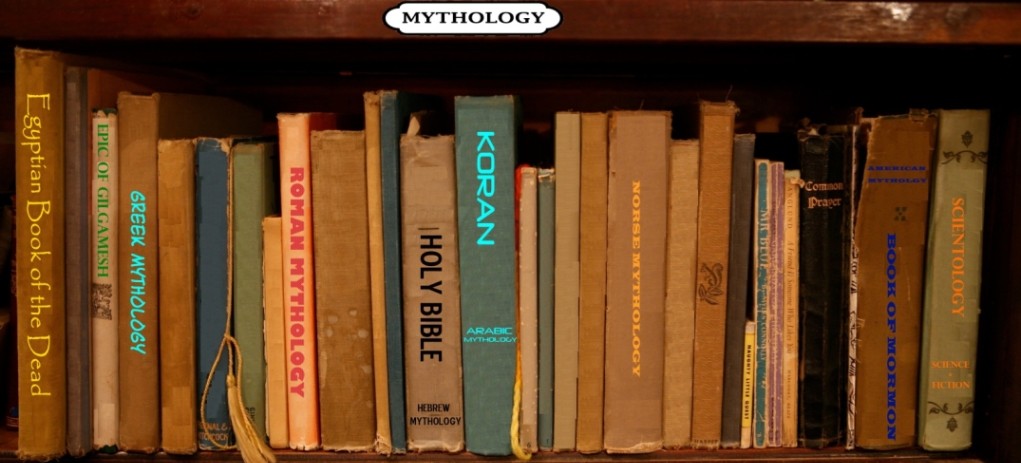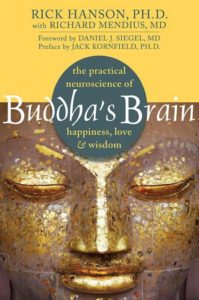
A short book review of the above. (13 chapters plus appendix, 234 pages, 196 references). From the Forward:
“The authors have woven together Buddhist practices developed over two thousand years and new insights into the workings of the brain to offer this guide to intentionally creating these positive changes in ourselves….we are invited to take a deep breath, and consider the neural reasons why we should slow ourselves down, balance our brain, and improve our connections with one another, and with our self.”
From the Preface:
“More than ever, the human world needs to find ways to build love, understanding, and peace, individually and on a global scale.”
Citing recent findings from neuroscience throughout the book, the authors: Rich Hanson, Ph.D. and Richard Mendius, M.D., make a case for “rewiring your brain-from the inside out- for greater well-being, fulfillment in your relationships, and inner peace.”
They give a clear basic understanding of the human brain for the layman and provide a good deal of solid science throughout the chapters.
Admirably, both authors state their philosophical leanings up front in chapter one, admitting they stray from the the standard view in neuroscience, the “materialist assumption”: that the mind is what brain does, or brain = mind= behavior view, and believe instead that the mind itself is more than just the function and output of the brain. They are both committed to a transcendental view of the mind, which claims:
“by definition it’s beyond the physical universe.”
However, in contrast to their spiritual yearnings, they go on to demonstrate in 13 chapters “how greatly the mind depends on the brain” explaining that “Even some spiritual experiences correlate with neural activities” and “Any aspect of mind that is not transcendental must rely upon the physical processes of the brain.”
They don’t attempt in this book to produce evidence for just what is transcendental and what is not and, again, kudos to them, for agreeing to stick to the neuroscience and what we know (emphasis mine) and readily, if not reluctantly, adopt “the working hypothesis that the mind is what brain does.”
“So with a deep bow to the transcendental, we will stay within the framework of Western science and see what modern neuropsychology, informed by contemplative practice, offers in the way of effective methods for experiencing greater happiness, love and wisdom.”
I guess I’d nod in acknowledgement as well to the healthy mindfulness and meditative aspects developed originally by the contemplative practitioners millennia ago, not sure I’d bow.
In Chapter 1 “The Self-Transforming Brain” Rick Hanson describes 3 survival strategies of animals and humans in the section entitled The Cause of Suffering:
1. -Separate what is actually connected, in order to create a boundary between itself and the world
2. -Stabilize what keeps changing in order to maintain its internal systems within tight ranges
3. -Hold onto fleeting pleasures and escape inevitable pains, in order to approach opportunities and avoid threats
1. Dr. Hanson’s transcendental leanings, I suggest, leak through a bit here. I contend that there is a real boundary, an identity between an organism and the world: from the cell wall to the bag of skin and tissue that separates living creatures from other creatures and the environment. And this separation, most evolved and internally modeled in us, is our sense of self. It is not connected, except in some esoteric sense that all living organisms are made of the same stuff and use the same neurons and neurotransmitters to produce mental, and physiological states, and behaviors. And we have evolved to feel an unprecedented level of empathy for life and other living things. But also, all organisms, including us have to keep their integrity, which most often includes eating other organisms. Sorry. The boundary is not illusory.
2. A correct characterization.
3. True, and if we overindulge ourselves in the “threats” of the modern world, now that we have figured out how to extend our lifespans to 3-4x longer than that enjoyed by our ancestors for 99% of our species existence, we can suffer all sorts of debilitating mind maladies: the mental disorders such as anxiety and depression, that we alone seem to endure at such widespread and often debilitating levels. To learn to control our mental and physiological responses, in order to keep our levels of stress, distress, and disease in check while approaching opportunities and avoiding threats…allgood.
I suspect he is entirely correct that we humans alone “worry about the future, regret the past, and blame ourselves for the present.” To learn to calm ourselves, from an extended lifespan of such concerns, added to the very real threats and misfortunes we risk with all other creatures trying to survive, often in a hostile environment, is a healthy practice to be sure.
However, while emphasizing suffering, (the first of the Buddhist Eight-fold Truths), he mentions we also “approach opportunities”, a proclivity and evolutionary advance which I think is entirely under-emphasized in his and Buddhist perspectives. Nothing has been accomplished by ritual or withdrawal into the monastic life. The time spent in contemplation only gets you so far. I suggest we also evolved other strategies for survival to add to his list, which are equally important, if not moreso, and are not about suffering: our wanderlust, pattern recognition, process recognition, pattern seeking, empathy, and need for cognition; our true thirst for knowledge. We love to discover new lands, new things, how things work, explore and construct. Emphasizing these virtues, (that also bring great personal joy and accomplishment), instead of suffering, or eliminating desires, and withdrawal into oneself, is to me, a major deficiency of the Buddhist mindset.
Yes, striving can cause us stress, but also immense pleasure, and it has allowed the ability to live a long, and essentially hunger and pain free life for billions, in the past century alone. The way we live now, with extended lifespans, multiple levels of security, less threat of personal pain and violence than anytime in human history, more personal freedoms under democracy, and a secular emphasis on human rights above all ideologies…Buddhist contemplative practices didn’t contribute much to getting us here. Taken to extremes, the Buddhist view becomes a withdrawal from those marvelous uniquely human capabilities which are the true source of our escape from suffering, and are intensely pleasurable in their own right. Eschewing all that life offers, good and bad, in breaking the endless cycle of suffering achieved through the ultimate endpoint of all meditative practice: nirvana, is the goal of the Buddhist understanding of the world. It’s why I don’t bow.
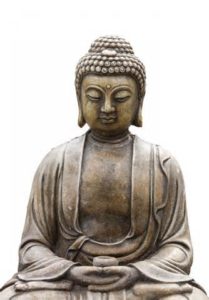
When Buddhist ideals were written down, we lived in shit. The previous hunter-gatherers may not have had the stresses of civilization, the tedium and disease of agriculture, that those living in Antiquity daily endured. “Life is all about suffering” was written when disease and uncertainty was rampant: No security to protect you from a petty thief, highway men, marauding horde, conquering civilization. Being abducted into slavery or tortured and killed, was a real fear for anyone. The gods were capricious and could punish us with misfortune and plague at any moment, or a tooth infection and lice infestation that both raged for years. The small reliefs, security, and the simple luxuries we take for granted today, didn’t exist yet. Life WAS much about suffering. And short, often painful. An understandable perspective, but horribly primitive and out of date today, and embellished with so much silly myth and mindless, useless, ritual. I’m not bowing.
The next few chapters of “Buddha’s Brain” make a good case, citing mostly recent studies from psychology and neuroscience that: “our brains are Velcro for negative experiences and Teflon for positive ones.”
Our brains, wired for novelty and more importantly vigilance for threats, tend to dwell on the negative and we can easily succumb to excessive anxiety. Happiness is fleeting, and sadness lingers. Hanson does draw on a lot of psychological studies that appear to back up the Buddhist perspective. However, one wonders how dramatic the effect is on the average person. Are we all that miserable? Sometimes when reading material such as this, that constantly repeat the mantra of how you can create: “more fulfilling relationships, a deeper spiritual life, and a greater sense of confidence and worth,” I get the impression that here’s just another New Age self-help book that promises to teach you how to “tap your unused potential and achieve peace of mind.”
The approach here is to develop habits of mindfulness and relaxation techniques which will “rewire your brain” for it not to be as susceptible, or channeled as it were, to react in negative emotional tone. Hanson instructs us to savor our happy moments and overcome the “negative bias of memory”; again, good advice. But I’d ask, Are our daily reminisces all so negative? At times I wonder if, given that neuropsychologists like Dr. Hanson and other clinicians regularly engage with the 15% of the general population who are suffering, sometimes debilitatingly so, that immersion colors their perception of the average Joe, (the other 85% of us) who through life’s ups and downs may not be all that miserable and stressed on a daily basis. Life may not be “all about suffering” much of the time, with so many of us enjoying career, family, hobbies, relationships, creative activities, charity work, and other rather fulfilling human endeavors; maybe more of us now than in any other time in human history, that the Buddhist and clinical perspective may be a bit overblown. Many of us may not need to meditate or practice advanced relaxation techniques.
Hanson: “Our world is poised on the edge of a sword” “a billion people go to sleep hungry every night” and we need to “pull ourselves back from the brink”. There have been plenty of times in human history when things were worse, 1939 surely comes to mind as one of the bleakest, or the height of the Cold War. We still have wars around the globe, but they are miniscule compared to the conflicts throughout human history, or the insane heights of destruction of human life and property experienced in the World Wars of the 20th Century. We still have genocidal behavior, but it is also, however horrific, on an incomparably smaller scale compared to the mass extermination of 10’s of millions each in Stalinist Russia, Mao’s China, Pol Pot’s Cambodia, and Hitler’s Germany of the same era.
To his credit, Rick Hanson does mention the increasing democritization of the world, but again with that Buddhist perspective fails to note we are living in some of the most war and genocide free, secure times, ever, with world poverty and disease reduced dramatically in the last half century. Certainly the threat of war, even nuclear war hangs over our head, but less people starve and die an early death from famine, war, disease, or persecution than any time in human history. But the ancient, primitive, negative view, I believe, tends to look through the wrong end of the telescope. Yes, we have suffering and anxiety. But our accomplishments as a species in the last century or so in improving our lot, gets little mention in the backwards looking, transcendence approach of the Eastern mystical tradition.
Despite the excellent presentation of how to reduce your sympathetic nervous system (SNS) arousal/anxiety responses and the impressive modern neuroscience behind the various relaxation techniques he offers, one could provide the same solid info without the harkening back to what I see as a overblown admiration for another out of date religious perspective. This fascination with “wisdom of the ancients” is part of the issue, I think. I could be wrong, but my perspective is, yes, the ancient contemplative practitioners figured out some healthy meditative techniques which we now understand just how they are mediated neurologically, but after that, their negative perspective is out of date, overblown, and should be viewed objectively.
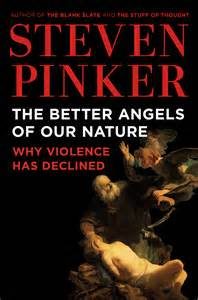
For a better perspective somewhat in opposition to the usual negative view of the human condition that religions like Buddhism emphasize, I suggest Steven Pinker’s “Better Angels of Our Nature”, Michael Shermer’s “Moral Arc”, and Matt Ridley’s “Rational Optimist”, as antidotes filled with a mass of data and an informed, modern, positive perspective in contrast to the traditional negative religious view.
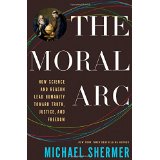
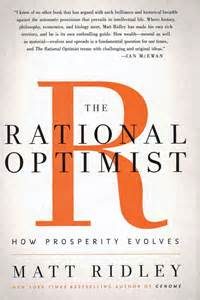
The bulk of the middle chapters, the real meat of “Buddha’s Brain” describe various relaxation techniques to lower your SNS arousal, thereby lowering stress and rewiring your brain in the process to be able to achieve this sort of calmness regularly. Hanson backs up these well studied mindfulness and meditation techniques with the psychological, physiological, and neurological, science behind their effects. It is a great read just for the clear exposition of brain structure and function.
The last chapter delves into more of the Buddhist outlook on the self being the source of our problems and suffering and the attempt at elimination of same through meditative techniques. Not surprisingly, there are more Buddhist platitudes in this chapter than real science, wholly unlike the previous chapters. The appendix is a nutrition addendum penned by the authors wife, an acupuncturist, full of the usual suggestions for multivitamins and various other nutritional supplements, much of which is not supported by solid science. Acupuncture itself is largely a matter of placebo effect and the effect sizes when present, are small. Most studies show little difference in treatment effects (if any) between real needles and sham acupuncture. Reviews of the data and findings on acupuncture can be found HERE, Here, and here.
Despite all the many, good, and proven effective mindfulness/meditative techniques in the book, there is also a lot of uncritical acceptance both of the Buddhist suppositions, and unproven alternative medicine, as in the nutritional appendix. Unfortunately, despite all the good science reported, this reader is left with the impression of a lot of “New Age” self-help pop-psych delivered along with it. One also wonders just how large the effects of some of these techniques are, and whether they might be achieved without the religiously inspired, ancient “wisdom” overtones.
I’m always struck by the fact that with nearly 7.5 billion humans on the planet, there’s roughly a billion who identify in the reincarnation religions of Buddhism, Hinduism, and Jainism. Throw in another 1/2 billion who may also partake in meditative practices and share this over the top reverence for what Eastern ancient scriptures claim about ultimate reality, the illusion of the self, and the “great truths” the contemplative practitioners of those religions over the centuries offer, as recently promoted in a book-length treatment in “Waking Up,” by the secular author, Sam Harris.
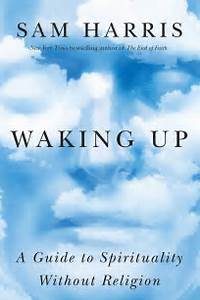
That leaves over 6 billion of us who somehow muddle through this life without benefit of these great truths from the Eastern contemplatives touted by Hanson and Harris, without regular meditation. I wonder if the more mundane and usual respites from the stresses of daily life, taking a walk, engaging with friends, family, or pets, getting concerns “off our chests,” smelling the roses, watching the sunset, curling up with a good book and other more mundane diversions are all nearly, if not equally effective at reducing SNS arousal, calming the body and mind. Not meditating, nor knowing what some 5th century guru proclaimed of the ultimate ground of being, nor being versed in the Buddha sayings as referenced throughout “Buddha’s Brain” appears to matter not much at all, to the health and well-being of most of us on the planet. There appears to be plenty of effective ways for stress reduction that are not wrapped up in Eastern mysticism and it’s yearning for some ephemeral rejection of the self.
(245)
